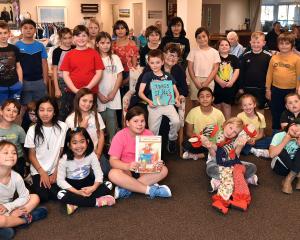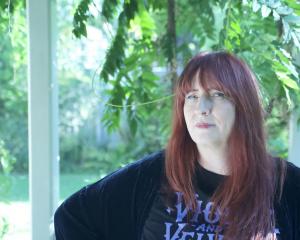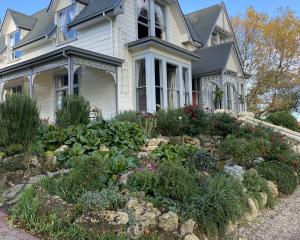
As there had been since 1993, there would be two issues a year, in May and November, "one themed, the other an 'open house' or partially themed".
The printed reviews in the two issues would be supplemented by further reviews posted monthly online, "so that these pages continue to provide a clear critical voice in New Zealand literature", and there would also be two art portfolios in each issue.
"Travelling companions" with the new Landfall would be four annual awards: the Landfall Essay Competition, the Kathleen Grattan Award for Poetry, the Seresin Landfall Residency, and the Caselberg Trust International Poetry Prize.
Landfall 222 marks the end of the first year of the new Landfall under Eggleton, a convenient time to take stock. The issue is dominated by the theme of its first section, "Christchurch" - a collection of responses to the earthquakes. The section opens with a striking pair of essays by Philip Armstrong and Fiona Farrell. Armstrong's "On Tenuous Grounds", the winning entry in the essay competition, is very much the expression of the literary intellectual's sensibility as it moves from a narrative of vividly realised personal impressions of the earthquakes and their aftermath to an associative sequence of "fragments of sense", recording the movement of a wide-ranging mind trying to make sense of an overwhelming phenomenon. Armstrong notes how common speech metaphors - "safe as houses", "when the dust settles", "like a ton of bricks" - were made ironic by literal reality; he notes how numbers "become talismanic" as people refer to the various numerical scales used to measure earthquakes; he relates the earthquakes to the Maori creation myth, to God's power in the "Book of Job" and to the mythical Leviathan; he remembers Herbert Guthrie-Smith's account of the 1932 Hawkes Bay earthquake at Tutira and the naturalist's amazed use of "vertiginous language" to describe the "nightmare happenings" of seemingly inert matter becoming active. Armstrong ends with a discussion of Jane Bennett's argument in Vibrant Matter that Western cultures have relied on a false distinction between "dull matter" (it/things) and "vibrant life" (us/beings), finding a possible philosophic answer to the challenge of the experience.
"The Quake", Farrell's essay (an email sent to her family and friends after the February earthquake), is a kind of moral narrative contrasting her feelings after the September 2010 earthquake, when she felt a "ridiculous glow of satisfaction at being unflappable any more" and a pride that Christchurch had "withstood the worst that nature could throw at it" , and her feelings after the February 2011 quake - "a hollow place beneath the breast bone when I think about Christchurch, my adopted home of 20 years: an empty ruined place around the heart". That email essay was absorbed into the fourth "walk" in her excellent book, The Broken Book, but it stands very well on its own as a moving document of the time.
The other prose accounts of the quake time - letters from Gavin Bishop, Ben Brown and Marian Maguire, a brief essay by Joanna Orwin - complement the two primary essays with some different details and perspectives. The earthquake poems are a testament to the power of the phenomenon in a different way, attempting to order and contain the monstrous within various formal strategies: the orderly patterning of a pantoum by Anna Kelly and a villanelle by Joanna Preston; the word play on the meanings of the title in Preston's "fault", the use of the "un-" prefix before nouns ('unbrick") and verbs ("unstack") in Jeffrey Paparoa Holman's "Who of You"; the organising image of the eye in Emma Neale's "Mind's Eye" (dedicated to Rhys Brookbanks, killed in the February quake), or the motif of Gothic paranoia in James Norcliffe's "fear of tremors". Noel Waite's essay, "The Caxton Press", gives another perspective when his years of work to gather materials for an exhibition to celebrate the accomplishment of Leo Bensemann and the Caxton Press, installed in the Christchurch Art Gallery on February 11, 2011, is put in the context of the earthquake of February 22, 2011 that closed it: "Nature trumped art and design".
On the other hand, Julia Morrison's "Meet Me on the Other Side" exhibition in Auckland late in 2011 made design out of the chaos of the quake, and the eight photographs of the "things" she constructed from "liquefaction sand, melted shopping bags, and discarded items" found on the street after the February earthquake are at the same time sad reminders of the powers of destruction and an assertion of the human ability to make meaning out of the meaningless. The Christchurch section of Landfall 222 adds up to a powerful expression of the artistic response to the Christchurch earthquakes, using the full range available to the new Landfall.
But the issue also includes much more. There is a section of over 40 pages. "Allen Curnow: A Centenary Tribute", containing reminiscences, short essays, and poems on Curnow, including reminiscences by his younger brother Anthony, Ian Wedde and Jan Kemp among others, a fine essay by Peter Simpson on working with Curnow, and poems by Janet Frame and C.K. Stead among others.
There is also an "open" section of more than 40 pages containing a portfolio of eight paintings (including the cover) by Miranda Parkes; a short story by another of those young Victoria University Press writers, Breton Dukes; a group of new poems, ranging from those by the long-established (Peter Bland, Cilla McQueen, Riemke Ensing, Anne Kennedy) to the work of such relatively new poets as Courtney Sina Meredith and Reihana MacDonald Robinson. Finally, there is Cilla McQueen's report on the Kathleen Grattan Award for Poetry, announcing Emma Neale's forthcoming The Truth Garden as the winning collection, and there are two excellent poems from it.
Worthy of special mention is the "Landfall Review". There are seven substantial reviews in the issue, dealing with biographies of Elsie Locke and Gillian Whitehead, a study of the painter Euan Macleod, six recent collections of New Zealand poetry (in two omnibus reviews), an illustrated history of New Zealand film, and Owen Marshall's The Larnachs. Charles Brasch's original Landfall reviewed almost all the significant New Zealand books of its time related to literature and the arts.
There are now far too many New Zealand books published for any journal to do that, but "The Landfall Review Online", which began in March 2011, with its monthly postings, has in 2011 provided reviews of just over 100 New Zealand books, including 19 works of fiction and 46 collections of poetry. These reviews cover a full range of literary works, from new experimental fiction to the novels of such as Lloyd Jones, Ian Wedde and Laurence Fearnley, from the poetry of Cilla McQueen to the collections brought out by a number of small presses, as well as arts-related biographies, histories and works of criticism.
Anyone interested in New Zealand literature and arts should consult them. They form an integral part of Landfall's ongoing contribution to literature and the arts in New Zealand.
- Lawrence Jones is an emeritus professor of English.












